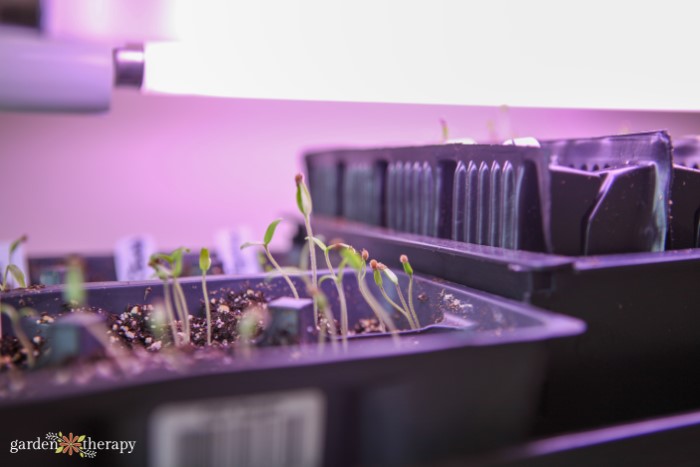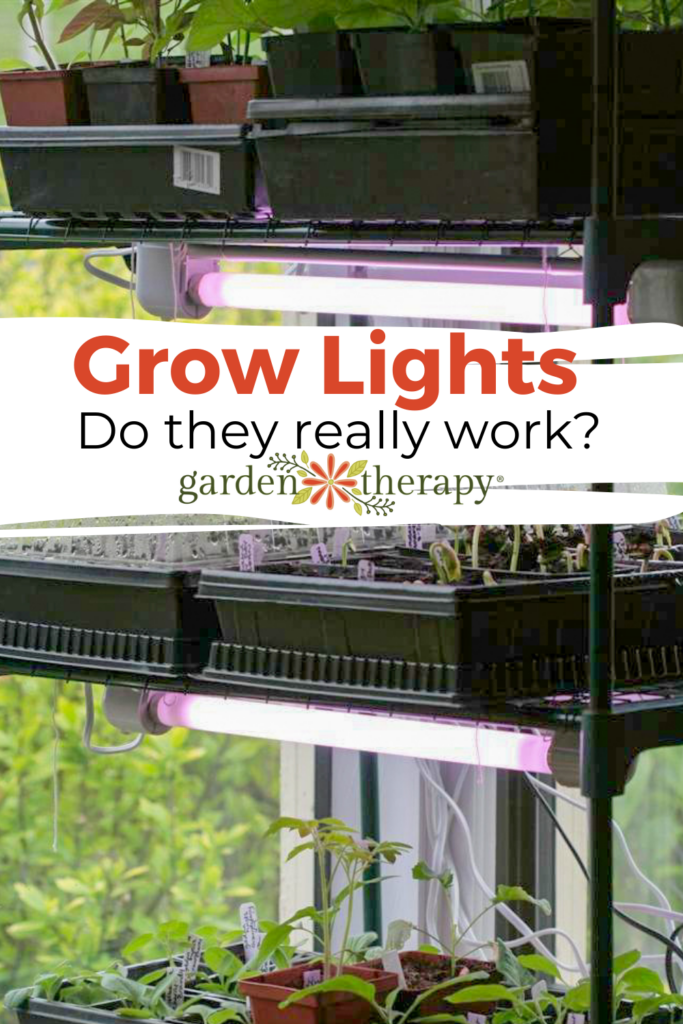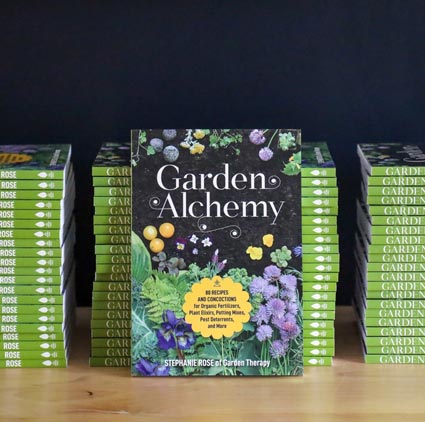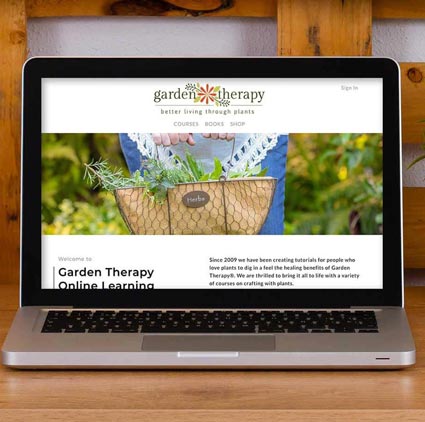Grow lights are one of the fanciest gadgets a gardener can have. While advertised as a sun replacement, do grow lights for indoor plants really provide everything the plant needs? My take on grow lights may surprise you, so let’s talk about it.
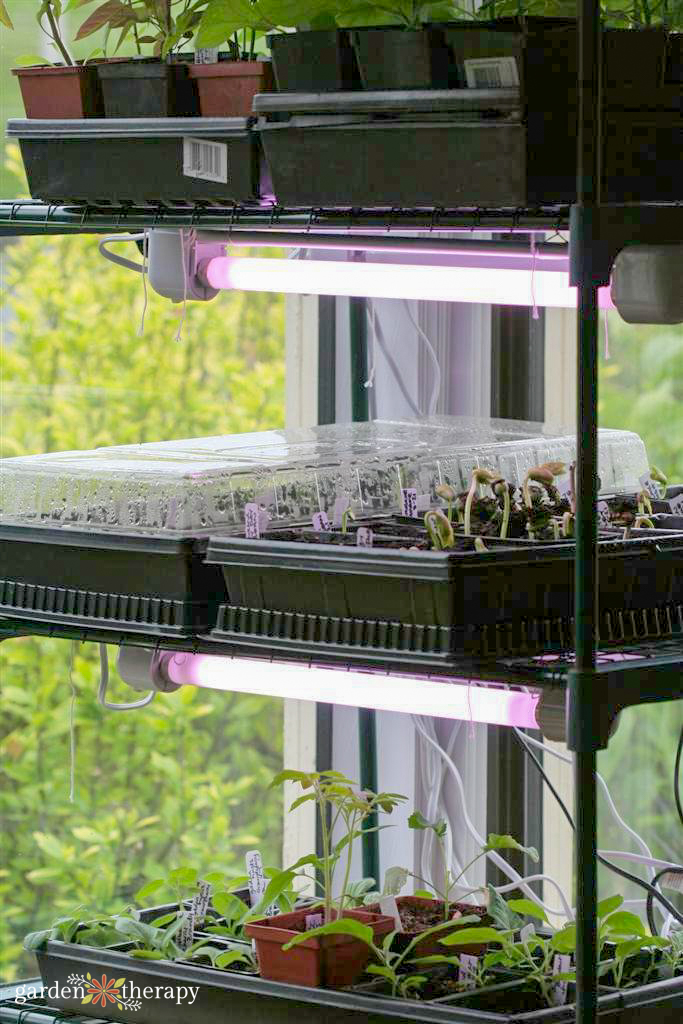
Back when I first started gardening, I was a big fan of using grow lights. People love them as a way to grow food indoors when you normally can’t, whether because there’s a blanket of snow covering your veggie space or your climate doesn’t allow it.
But even inside the home, growing food is a lot of work! I actually grow very little produce, even in the summer, as I find the effort and cost are usually not worth the reward.
Lately, however, I have been doing plenty of double takes to my grocery bill. And I know I’m not alone in that! Food prices and the cost of living are on the rise. I’ve been reassessing a lot of my priorities when it comes to gardening, and I wonder whether or not it’s time for grow lights to make a comeback in my life!
So, let’s do a little deep dive into whether or not these grow lights for indoor plants are an economical and useful choice for the home gardener.
This post will cover…
- Expert Tips and Info on Using Grow Lights for Indoor Plants
- How Do Grow Lights Work?
- My Experience With Grow Lights
- Cost vs Yield of Grow Lights
- Are Grow Lights Worth It?
- What to Grow With Grow Lights
- Frequently Asked Questions About Grow Lights
- More Burning Questions Answered
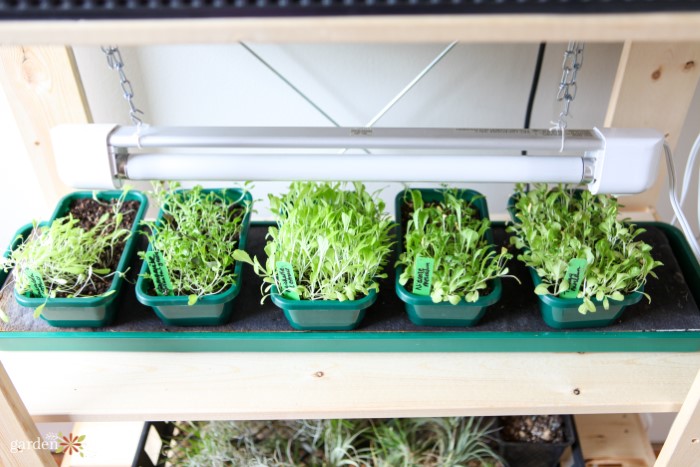
Expert Tips and Info on Using Grow Lights for Indoor Plants
- Grow lights work by emitting photons, which the plants use to convert into energy for growing.
- Grow lights work best for seed starting and as countertop gardens.
- Avoid using grow lights as a sole light source. They should be temporary or supplemental.
- Natural sunlight is always more desirable than grow lights in a plant’s eye.
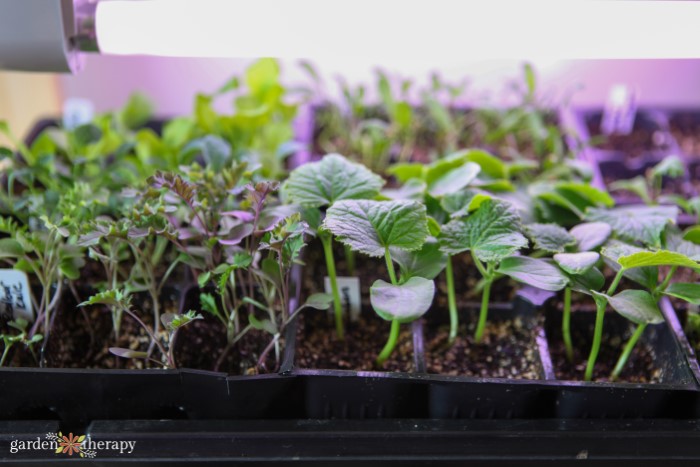
How Do Grow Lights Work?
First, a quick science lesson. Plants require sunlight to create the energy they need to grow and reproduce. This process is known as photosynthesis. It’s a grow light’s goal to try and replicate the sun’s energy to allow the plant to grow indoors where natural light is scarce.
Grow lights produce photons, which the sun also produces. The plants then use these photons for photosynthesis.
Each photon has a different wavelength, which the human eye views as colours. For plants, some of these wavelengths are better than others. Plants prefer blue and red light.
A good grow light will try to produce the right colours so the plant gets everything it needs indoors. LED lights have grown in popularity as grow lights for indoor plants since they can emit a single colour, making them very efficient.
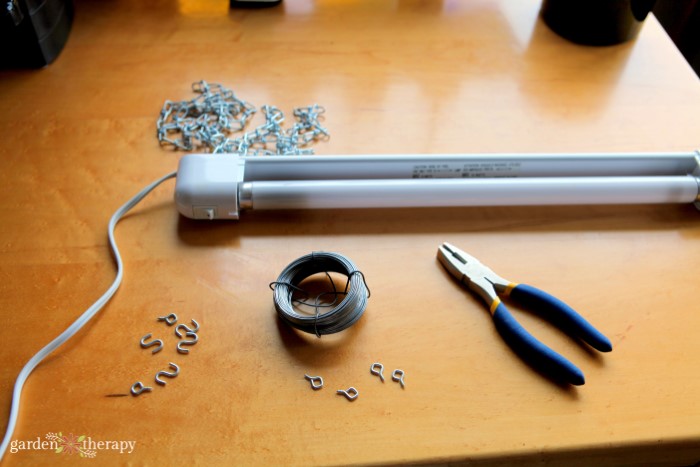
My Experience With Grow Lights
In the past, I’ve had a couple of grow light set-ups. And before you start thinking about it, I didn’t have a basement full of a certain once-illegal plant!
My first set-up was a tiered Ikea shelf that I decked with standard fluorescent utility lights. These were my grow lights for seedlings where I could kick off the gardening season early. As you can see, it had the space to grow many plants. The more established my garden got, the less I needed it!
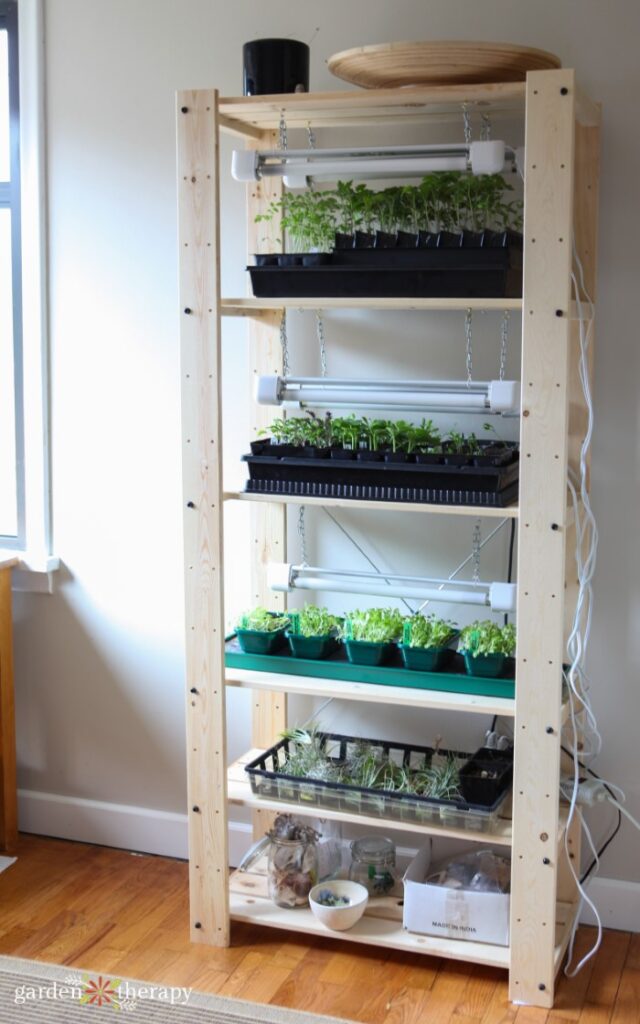
The other time I used a grow light was a much smaller operation. This was my countertop kitchen garden. I used it to grow sprouts, microgreens, and salad greens on my countertop. It had a self-watering tray and an adjustable light stand with bulbs inside.
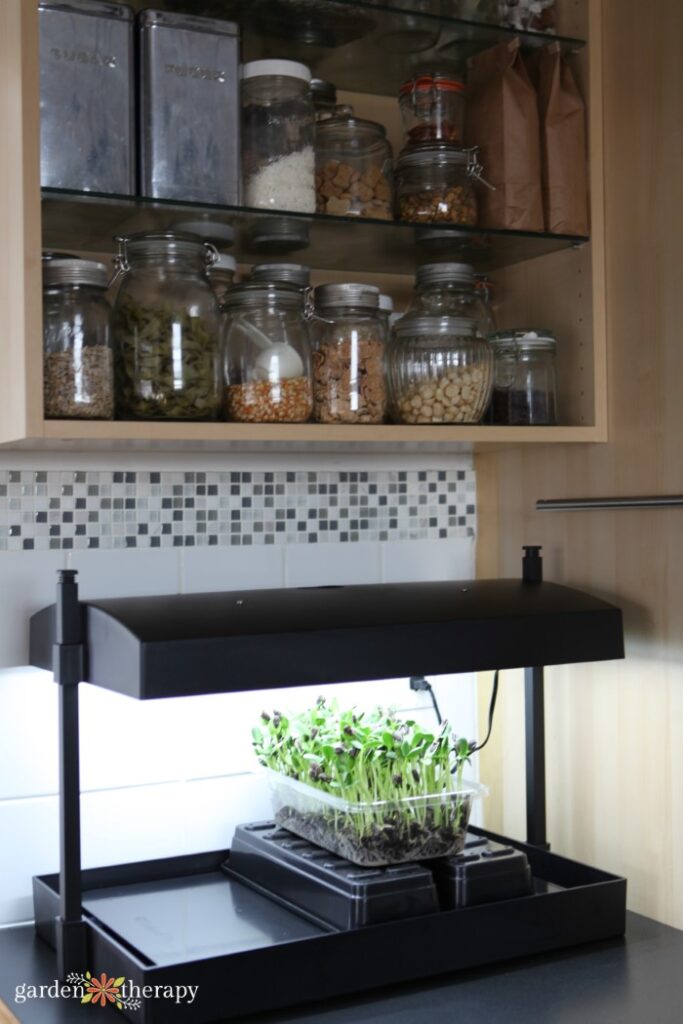
Cost vs Yield of Grow Lights
So how much can you really grow with a grow light garden? I’m going to use lettuce as an example to see whether or not it’s worth it to grow food using grow lights.
My grow light countertop could hold four trays of lettuce. Lettuce is typically ready for harvesting about every 3-4 weeks. So in one month, you could have about four trays of lettuce. With succession planting, you could enjoy one tray every week.
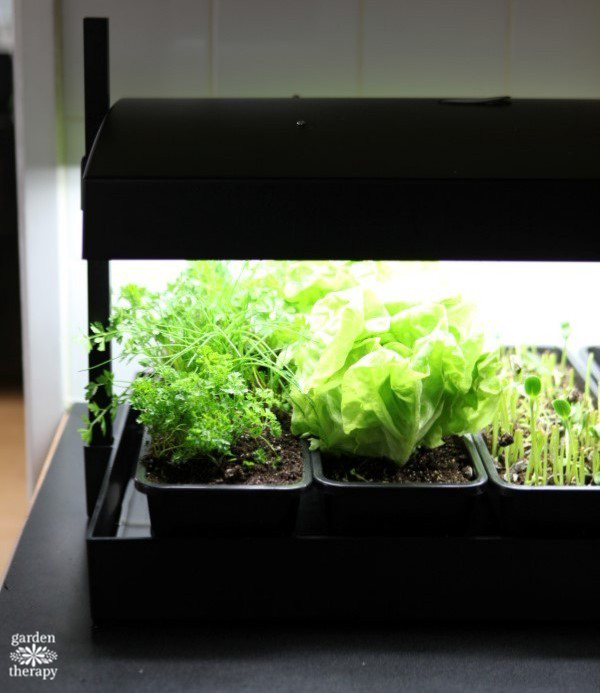
Let’s say that each tray of lettuce would equal one large container of cut and washed lettuce at the grocery store. As of right now, this would cost me about $7.50 CAD per container at the store. So if I were someone who eats one of these a week, I would save about $30 a month by growing it myself.
Another thing to factor in is the initial cost of your grow light setup as well as seeds. A system like mine could cost anywhere from $150 to $220. But one packet of seeds for $4 can go a long way when it comes to lettuce!
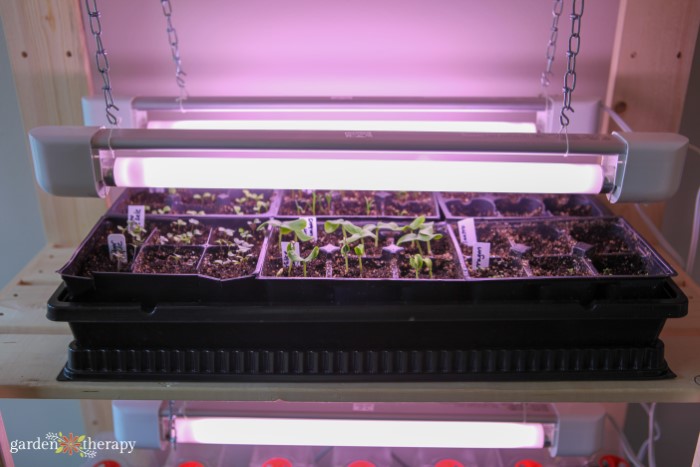
Are Grow Lights Worth It?
That’s for you to decide! It certainly could be worth the effort for someone interested in a little bit of countertop gardening.
If you’re someone who eats a lot of greens, you may not be able to grow enough to grow for it yourself completely. You may need a whole setup like this one! Peter, the designer of the tiered system, grows all the greens he needs year-round with it.
For other vegetables, I wouldn’t use them except as grow lights for starting seedlings. The light from grow lights will always be less powerful than getting plenty of natural sunlight. The same could be said about the soil and water outdoors.
Grow lights are also great for nannying plants in the winter when light levels are low or combined with a watering system for plant cuttings.
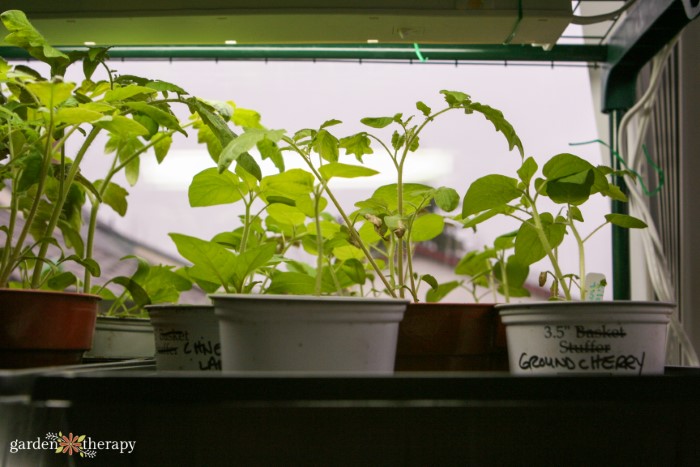
What to Grow With Grow Lights
So what do I recommend using grow lights for? Here’s the main ones I think make sense:
- Microgreens (sunflower is my favourite)
- sprouts
- lettuce mixes
- kale
- mustard greens
- kitchen herbs like basil and chervil
I also think it can make sense to use a grow light as seed starters for high-fruiting plants, like tomatoes or strawberries. That’s because they will need lots of sun to get all the energy required to produce all the fruit. Don’t leave these seedlings under the grow lights for too long, as they will need the natural sun to truly get enough energy.
Try not to use grow lights as the sole source of light. They’re great for temporary or supplemental light.
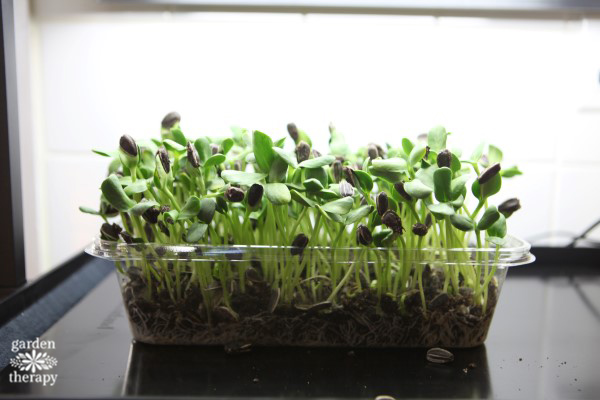
Frequently Asked Questions About Grow Lights
Grow lights work to replicate the same photons that the sun does, which a plant uses for photosynthesis to convert sunlight into energy. Grow lights will never be as good as getting direct, natural sunlight, but they do a pretty good job. The lights must be hung very close to the plant for the light to work well.
Grow lights traditionally were incandescent, fluorescent, and HID lighting. To the human eye, most of these lights look bright white but contain lots of green and yellow lights. Plants typically don’t use these colours often, preferring red or blue light.
With LED, they can emit many different kinds of light but only emit a single colour at a time. This means they can emit exactly red or blue light, getting more specific to a plant’s needs and therefore are a little more effective for growing plants.
For most home gardens, standard fluorescent utility lights work perfectly fine and will produce what you need. But if you can find inspective grow lights for indoor plants, go for it!
LED lights are very efficient at producing the right kind of light for plants, which makes them a popular option for grow lights. LED lights should emit blue, green, or a purple combination to be the most effective.
The wavelengths that are most worrisome for our eyes are blue light and UV light. Most grow lights will have varying levels of both. Blue light can affect our ability to sleep, keeping us awake. Too much blue light can also damage light-sensitive cells in the retina.
Grow lights typically have UV-A, which can cause damage to the retina. You’ll be perfectly fine if you don’t spend much time near the lights. But if you work under them often, you may want to wear some eye protection. Always avoid staring into the lights.
